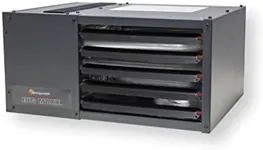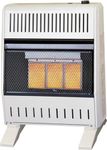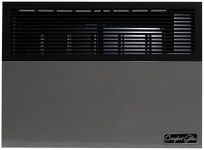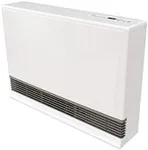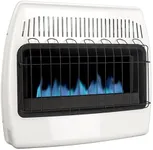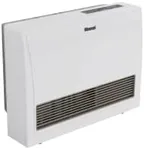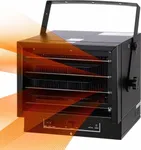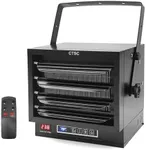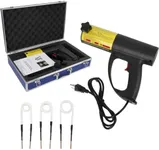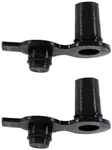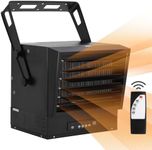Buying Guide for the Best Wall Mounted Gas Heaters
Choosing the right wall-mounted gas heater for your home or office can significantly impact your comfort and energy efficiency. It's important to consider various factors to ensure you select a model that meets your heating needs while being safe and cost-effective. Here are some key specifications to consider when shopping for a wall-mounted gas heater, along with explanations to help you make an informed decision.Heating Capacity (BTU)Heating capacity, measured in British Thermal Units (BTU), indicates how much heat the heater can produce. This is crucial because it determines how effectively the heater can warm up your space. For small rooms, a heater with a lower BTU rating (around 5,000-10,000 BTUs) is sufficient. Medium-sized rooms may require 10,000-20,000 BTUs, while large rooms or open spaces might need 20,000 BTUs or more. To pick the right one, consider the size of the area you need to heat and choose a heater with an appropriate BTU rating to ensure efficient heating.
Energy EfficiencyEnergy efficiency refers to how well the heater converts gas into heat without wasting energy. This is important because a more efficient heater will use less gas, reducing your energy bills and environmental impact. Look for heaters with high efficiency ratings, often indicated by an Energy Star certification or a high Annual Fuel Utilization Efficiency (AFUE) percentage. For most users, a heater with an AFUE of 80% or higher is a good choice, balancing efficiency and cost.
Ventilation TypeVentilation type determines how the heater expels combustion gases. There are vented and vent-free (or ventless) models. Vented heaters expel gases outside, making them safer and more suitable for continuous use in living spaces. Vent-free heaters are easier to install and more efficient but require good room ventilation to avoid indoor air quality issues. Choose a vented heater if you prioritize safety and air quality, especially in smaller or less ventilated rooms. Vent-free heaters can be a good option for well-ventilated areas or occasional use.
Ignition SystemThe ignition system is how the heater starts. There are two main types: pilot light and electronic ignition. A pilot light is a small, continuously burning flame that ignites the gas, while electronic ignition uses a spark or hot surface to start the heater only when needed. Electronic ignition is more energy-efficient and safer, as it eliminates the need for a constantly burning flame. If you want to save on gas and reduce maintenance, opt for a heater with an electronic ignition system.
Safety FeaturesSafety features are critical in gas heaters to prevent accidents and ensure safe operation. Key safety features include oxygen depletion sensors (ODS), which shut off the heater if oxygen levels drop too low, and overheat protection, which turns off the heater if it gets too hot. Some models also have tip-over switches that shut off the heater if it is knocked over. Prioritize heaters with these safety features, especially if you have children or pets, to ensure safe and worry-free operation.
Thermostat ControlThermostat control allows you to set and maintain a desired temperature, ensuring consistent comfort and energy efficiency. Some heaters have manual thermostats, while others offer programmable or digital thermostats for more precise control. If you want to maintain a steady temperature without constantly adjusting the heater, choose a model with a programmable or digital thermostat. This feature is particularly useful for maintaining comfort in living spaces or offices.
Size and DesignThe size and design of the heater affect its placement and how well it blends with your decor. Wall-mounted gas heaters come in various sizes and styles, from compact and discreet to larger, more decorative models. Consider the available wall space and the room's aesthetic when choosing a heater. A compact, sleek design is ideal for smaller rooms or modern interiors, while a larger, more ornate heater might suit a spacious or traditionally styled room. Ensure the heater fits well in your space without obstructing movement or clashing with your decor.

